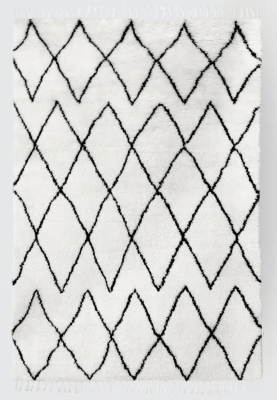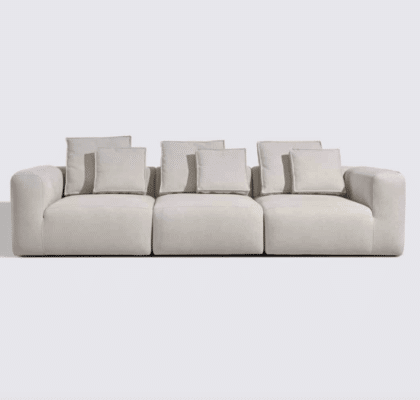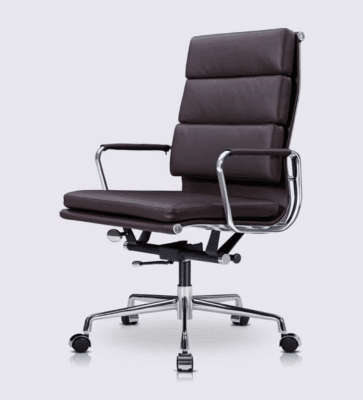
Cleaning preparation
Identify the type of leather
Before starting any cleaning process, it’s essential to identify precisely the type of leather your chair is made of. Leather comes in different categories, such as aniline, semi-aniline and pigmented leather. Each of these variants requires a particular approach in terms of care and cleaning products.
Each type of leather requires specific care and suitable products. For example, aniline leather is more sensitive to moisture, while pigmented leather is more resistant to stains. By knowing the type of leather, you can choose the cleaning products best suited to preserving the integrity and beauty of your chair.
Knowing the type of leather your chair is made of is crucial to choosing the right cleaning products and avoiding any damage. For example, a product that is too aggressive for aniline leather could damage it irreparably. It is therefore advisable to consult the manufacturer’s specifications or seek specialist advice if you have any doubts. This step is essential to ensure that your furniture is cared for in the best possible way, preserving both its appearance and its longevity.

Our leathers
At Stefano Design, we offer two types of leather: lightly grained, soft-touch full-grain leather and extremely soft aniline leather, both of which are durable and of exceptional quality.

Gather the necessary tools
Once you’ve identified the type of leather, it’s time to gather the tools you’ll need for cleaning. For basic cleaning, you’ll need a soft, dry cloth to remove dust, a vacuum cleaner with a soft brush to reach crevices, and a slightly damp cloth to wipe the leather surface. If more thorough cleaning is required, prepare a solution with warm water and a mild soap, such as Marseille soap.
It’s also a good idea to keep specific leather cleaning products on hand. These cleaners are designed to treat leather without damaging it. A leather conditioner is also essential to nourish and protect leather after cleaning.
Testing products on a discrete area
Before applying any product to the entire chair, we strongly recommend testing a small, inconspicuous area first. This precaution allows you to check the reaction of the leather to the product used. Certain substances may cause discoloration or deterioration of the leather, particularly if it is sensitive or delicate.
To perform this test, apply a small amount of product to a soft cloth and gently rub the chosen area.
Wait a few minutes to observe any adverse reactions. If no changes are visible, you can safely proceed to complete cleaning.

Our advice
Perform the test on the back or underside of your chair to check compatibility with leather.

Cleaning techniques
Dirt and dust removal
Regular *cleaning* of dirt and dust is essential to maintain the appearance of the leather. Start by dusting the surface with a soft, dry cloth.
To remove dust particles and crumbs hidden in seams and crevices, use a vacuum cleaner fitted with a soft brush. This will preserve the texture of the leather and prevent scratches.
Once the dust has been removed, wipe the leather surface with a slightly damp cloth. This removes surface dirt without getting the leather too wet, which could damage it. Make sure the leather is completely dry before proceeding to the next step.

Our recommendation
Dust your cui furniture every week, ideally during housework.

Key point
The sooner you take action to treat a stain on your leather sofa, the easier it will be to remove. By acting as soon as the stain appears, you prevent it from setting in and permanently damaging the leather.
Processing specific tasks
To treat specific stains, it’s important to act quickly. The longer a stain remains on leather, the harder it is to remove. So don’t wait for the stain to set in. As soon as you notice a stain, act quickly. Prepare a mild cleaning solution by mixing lukewarm water with a mild soap. Soak a clean, soft cloth in this solution, then gently dab the stain with light strokes. It’s important not to rub, as this could damage the leather surface and cause scratches. Dabbing absorbs excess dirt without altering the texture of the material.
For stubborn stains, the use of a specialized leather cleaner may be necessary. Apply the product according to the manufacturer’s instructions, taking care not to saturate the leather. After treatment, wipe the surface with a dry cloth and allow to air dry, away from any source of direct heat.
Use of a specialized cleaner
Specialized leather cleaners are formulated to clean thoroughly without damaging the surface. They can be particularly useful for pigmented leathers that require special care. Before using these products, read the instructions carefully and follow the manufacturer’s recommendations.
Apply the cleaner with a soft cloth, using circular movements. Make sure you cover the surface evenly to achieve a uniform result.
Once cleaning is complete, wipe off any excess product with a dry cloth and allow the leather to air dry.
All on video
Here’s a short video to show you how to properly clean your leather armchair.

Care & protection
Condition leather regularly
Regular conditioning of leather is crucial to maintain its suppleness and prevent drying out. Use a conditioner specially designed for leather, following the manufacturer’s instructions. The conditioner deeply nourishes the leather, protecting it from cracking and fading.
Apply conditioner with a clean cloth, using circular movements to ensure thorough penetration. Allow the leather to absorb the conditioner for a few hours before using again.
Regular conditioning of leather not only maintains its aesthetic appearance, it also extends the life of your chair. By acting as a protective barrier, conditioner helps combat the effects of time, stains and daily wear and tear. So, by caring for your leather chair in this way, you guarantee not only its beauty, but also its comfort and longevity for years to come.

Our tip
If you don’t have a special leather product at hand, a simple and effective solution is to use baby moisturizing milk. It gently nourishes leather while preserving its suppleness and shine.

Our news
It is recommended not to expose leather to temperatures above 30°C for long periods, as this can lead to dehydration of the material, making the leather dry and brittle. Similarly, prolonged exposure to humidity (over 80% relative humidity) can cause mildew or swelling of the leather.
Protect leather from external aggression
To guarantee the durability of your leather armchair, it’s crucial to protect it from external aggression. Start by avoiding direct exposure to sunlight or heat sources such as radiators or fireplaces, which can dry out and discolor the leather. Use curtains or blinds to limit exposure to UV rays.
In addition, leather must be protected from aggressive chemicals such as alcohol, solvents and detergents. These substances can alter not only the texture but also the color of the leather. Finally, it’s important to keep leather away from sharp or rough objects that can cause scratches or tears.
By taking care to protect leather from external aggression, you help to maintain its suppleness, shine and resistance over time. Proper care and protection will prolong the life of your leather armchair and preserve its aesthetic appearance. By taking these simple but effective precautions, you can be sure that your furniture will retain its beauty, texture and comfort for many years to come.
Avoid common mistakes
To ensure optimum care of your leather, it’s essential to avoid certain common mistakes.
Never use household products not designed for leather, as they can cause irreversible damage. Also, do not over-wet leather when cleaning, as excess moisture can cause water stains and warping.
Also, avoid vigorous rubbing of stains, as this can alter the texture of the leather. By adopting proper cleaning practices and avoiding these mistakes, you can ensure the durability and aesthetic appeal of your leather armchair.





